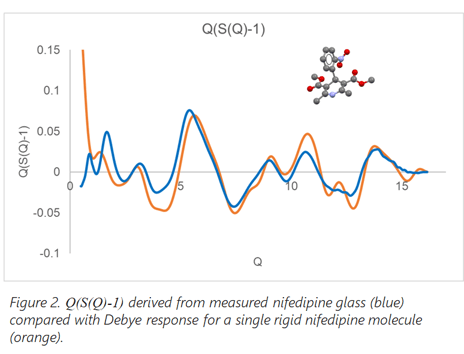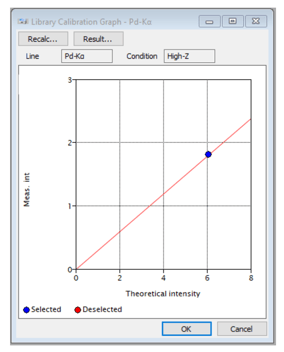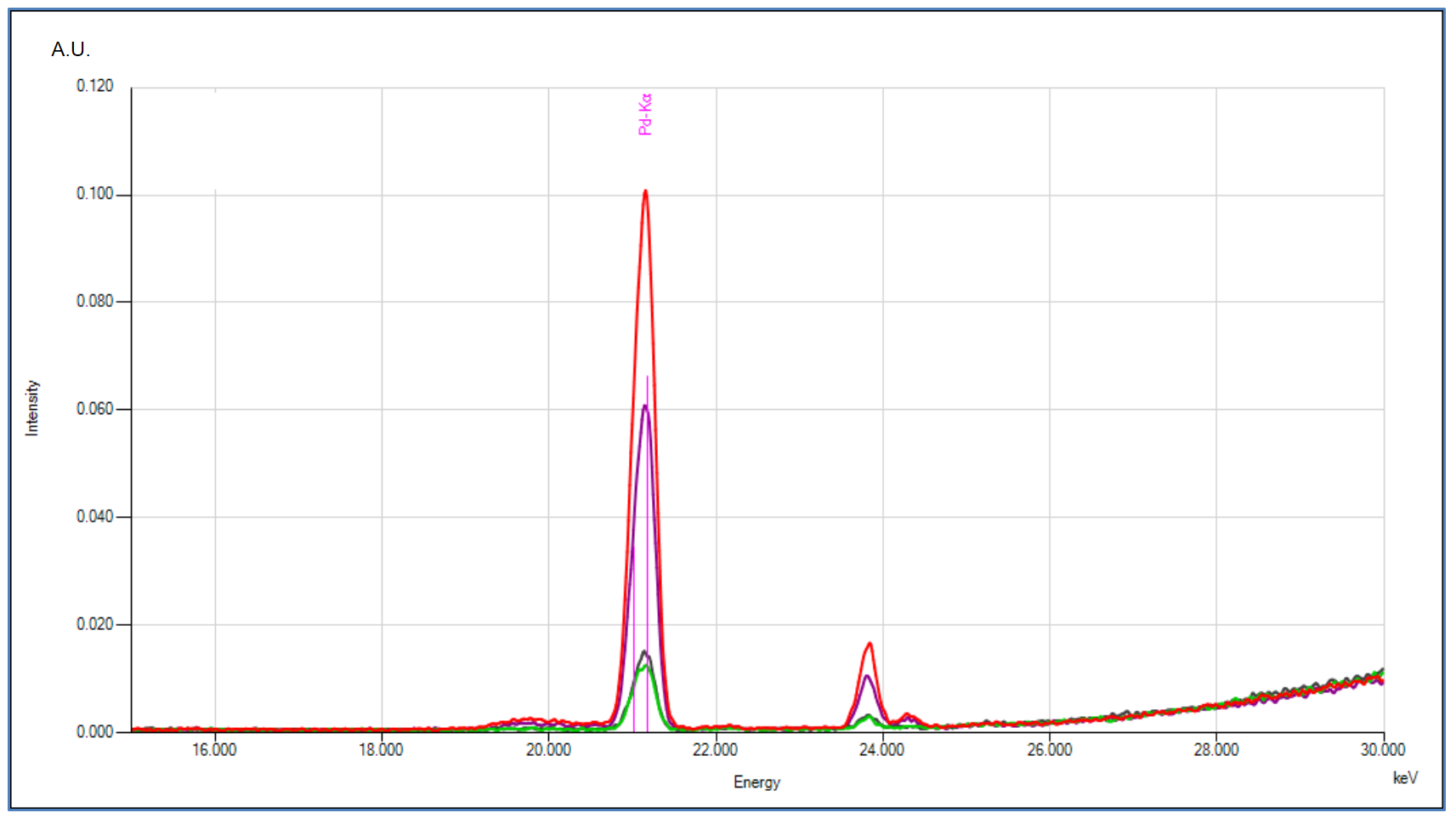PALLADIUM CATALYST IN PHARMACEUTICALS
SCOPE
The analysis of palladium (Pd) in cellulose powder is demonstrated.
BACKGROUND
Palladium is a common catalyst in the manufacturing of pharmaceuticals. Pills and tablets are ground to homogeneous powder to test for any retained spent Pd as well as other heavy metals such as unwanted Cd, Pb, Hg, and Br as part of the quality control process. The Pd is also monitored during the recovery of the catalysts material. Cellulose is a common medium for pharmaceuticals and testing is often done in pills ground to powder or cellulose powder itself. For quality control and manufacturing purposes, the Rigaku NEX DE EDXRF analyzer is an excellent tool for the measurement of trace heavy elements and other elements of interest in pharmaceutical products.
INSTRUMENTATION
Model: Rigaku NEX DE

X-ray tube: 12W 60kV Ag-anode
Detector: High Throughput SDD 500,000+ cps
Film: Polypropylene 4um
Analysis Time: 300 sec
Atmosphere: Helium (for measurement of light elements)
Sample Tray: 15-position Autosampler
Sample Cups: 32mm micro cups with 10mm ID funnel(Rigaku part #1020163)
SAMPLE PREPARATION
Sample quantity may be limited, typically <1g. To prepare the sample, weigh powder and place in special funnel shape XRF sample cups. The funnel shape brings the powder into a smaller area, ideal for obtaining sample depth with small amounts of powder.
The data demonstrated here used 0.5g powder and a 10mmID (inner diameter)funnel XRF cup. Smaller funnel IDs can also be used, such as a 5mm funnel area. The NEX DE VS is equipped with small spot collimators 10mm, 3mm and 1mm, excellent for measuring the funnels areas smaller than 10mm (see also Discussion section).
RIGAKU RPF-SQX Fundamental Parameters (FP)
RPF-SQX is an advanced FP that uses advanced profile fitting and theoretical fundamental equations to obtain concentration results without any reference samples. The analytical method was developed from the built-in Powder Template and cellulose (C6H10O5) was selected as the matrix balance component. A Matching Library for Pd was established using sample “26317701” as the representative reference material, so this sample is omitted from the reported results. Matching Libraries are easily created by the user and are used in conjunction with the standard FP library in the modeling of a sample matrix and calculation of concentration results. This allows for semi-quantitative measurement of elemental concentrations without the need for a large suite of known assayed calibration standards. Standardless semi-quant is excellent for screening, research, and comparative analyses.
RIGAKU Matching Library Approach

The NEX DE software allows for users to easily create their own Matching Libraries to fine-tune semi-quant results. A Matching Library uses one or more samples with known elemental concentrations assayed by a referee technique such as ICP. The theoretical intensities calculated by FP are adjusted to match the intensities of the standard sample and ICP concentration results, optimizing the accuracy of the FP results.
To obtain the results demonstrated a 1-point Matching Library was created using a sample with 374 ppm Pd assayed by ICP.
NEX DE RESULTS
Results for Pd using Matching Library and semi-quant screening results for other elements of interest using standard 10mm collimator.

ND indicated Not Detected, below the LLD.
Parentheses indicate above LLD but below LLQ
SPECTRA
To demonstrate the sensitivity using NEX DE unique features including 60kV X-ray tube and half million counts SDD detector, several samples were measured at various stages of Pd recovery. The spectra overlapped below range from 50-400 ppm Pd.

DISCUSSION
NEX DE uses the standard 10mm collimator spot size. For smaller sample amounts NEX DE VS variable spot system is equipped with small spot collimators for the measurement of sample spot 3mm or 1mm for Pd above the trace and ultra-low levels.
Accuracy is further improved by the use of more assayed matrix-matched assayed samples. For the highest degree of accuracy in measuring Pd, especially at the low and trace levels, empirical best-fit regression calibration can be made instead of using FP. By the empirical approach5 or more accurately and precisely assayed samples that span the Pd concentration range of interest are used to best-fit regression calibration, defining exactly the X-ray sensitivity in relation to concentration.
CONCLUSION
The results demonstrated here show excellent sensitivity and precision for the measurement of Pd in cellulose powder. Other metals and elements of interest can be measured as well in the same application method. Rigaku Matching Library software allows the user to optimize accuracy using one or more assayed samples, and semi-quant allows for excellent screening with no reference samples. Advanced design features including variable small spot capability in NEX DE VS combined with simple, intuitive software to make NEX DE an excellent tool for quality labs, R&D as well as at-line monitoring by non-technical personnel alike.
RIGAKU RECOMMENDS
NEX DE BENCHTOP EDXRF FOR PHARMACEUTICALS
_picture_127_2020.09.21.png)
